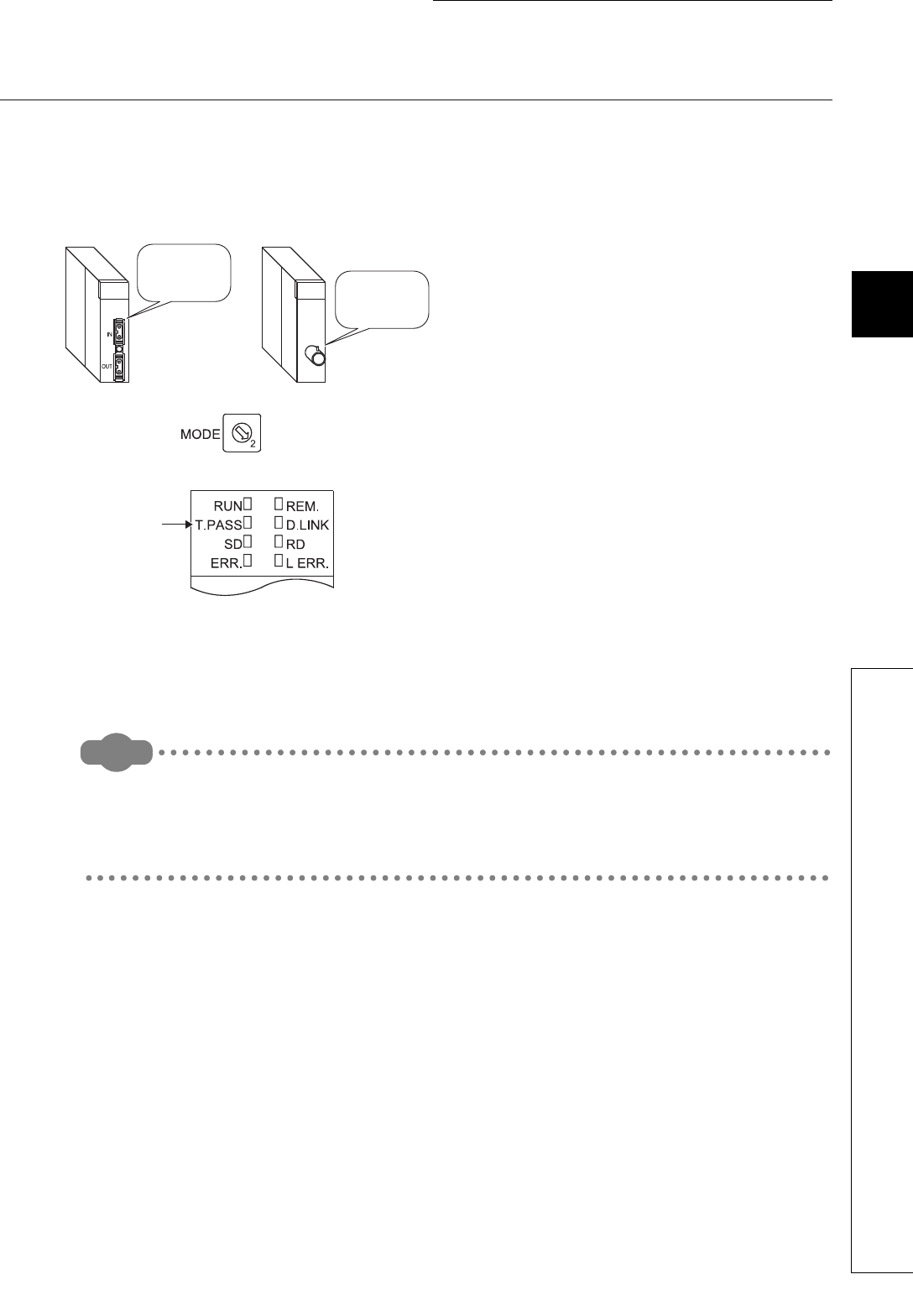
41
CHAPTER 4 SETTING AND PROCEDURE BEFORE OPERATION
4
4.3 Unit Tests of the MELSECNET/H Remote I/O Module (Offline Test)
4.3.2 Internal self-loopback test
4.3.2 Internal self-loopback test
This test checks the internal circuits including the send/receive circuits of the MELSECNET/H remote I/O module
When the test completes with an error, the possible cause is a hardware failure of the MELSECNET/H remote I/O
module. Please consult your local Mitsubishi representative.
Remark
Check the test condition and error details with the following link special register areas.
• Baton pass status (host) (SW0047) 1F
H
: Offline test
• Cause of baton pass interruption (SW0048) 2
H
: Offline test
• Offline test execution item/faulty station (requesting side) (SW00AC) 8
H
: Internal self-loopback test
• Offline test result (requesting side) (SW00AD) 0: Normal, 1 and later: Error code
1. Do not connect an optical fiber cable for the
QJ72LP25-25, QJ72LP25G. and QJ72LP25GE
Prevent ambient light from entering the
connector.
Do not connect a cable or terminating resistor to
the QJ72BR15.
2. Set the mode setting switch on the
MELSECNET/H remote I/O module to "2".
3. Power on the target module.
The internal self-loopback test starts and the
T.PASS LED flashes.
4. The test is completed normally when the T.PASS
LED flashes 20 or more times (approx. 10
seconds) and the ERR. LED does not flash.
When the test completes with an error, the ERR.
LED flashes.
For QJ72LP25-25,
QJ72LP25G, QJ72LP25GE
(optical loop system)
For QJ72BR15
(coaxial bus system)
Avoid ambient
light.
Do not connect
anything.
Flashing


















